Months back, I talked myself (quite easily I should add) into buying a Sony 135mm STF A-mount lens of regular reader Rollin Banderob. I was beyond intrigued by this unusual lens, and seeing Rollin shooting it on his Leica M10 made me want to do the same.
Unfortunately, it was one of those bits of GAS that came to nothing. In fact, the only thing I ended up using it for was as a slightly longer lens in combination with the Sony A6400 for video at work. That camera has a 1.5x crop sensor and with the “clear image zoom” which just uses a smaller part of the sensor and still give full HD video, it made for a ~400mm equivalent which turned out to be very useful for a few event videos we made.
This, of course, is a massive waste of this lenses capabilities. We could have used pretty much any 135mm lens and had basically the same outcome. In fact, my £30, smaller, lighter and faster 135mm f/3.5 Pentax-M lens would have given us a speed advantage if nothing else – I just don’t have the right adapter to mount it to the Sony.
Using the Sony 135mm STF lens on that occasion did make me realise I needed to use it for something properly though. A £5-600 lens sat unused is an absolute travesty – I needed to play with it, even if it was just to scratch the original itch of intrigue that had seen it end up taking the trip from the States to my hands in the first place. Of course, like many ideas I had before this virus kicked off, this particular plan initially felt mostly shelved.
Then one day just into lockdown whilst down at The Kiln collecting a few bits and bobs that I needed to keep working from home I spotted it sat in the Peli case looking all sad and unused. By this time, I had come to the realisation that whilst my back garden isn’t the richest environment for photographic exploration, it might just provide me with enough inspiration and opportunity to take a few interesting photos whilst I don’t have much option to go elsewhere. The sun was out too, and the previous owner of the house had kept the garden really nice with a good variety of different bushes and plants and trees and stuff. So when leaving the office, I grabbed the Sony 135mm STF and the Leica adapter and committed myself to the idea that I would finally shoot it.
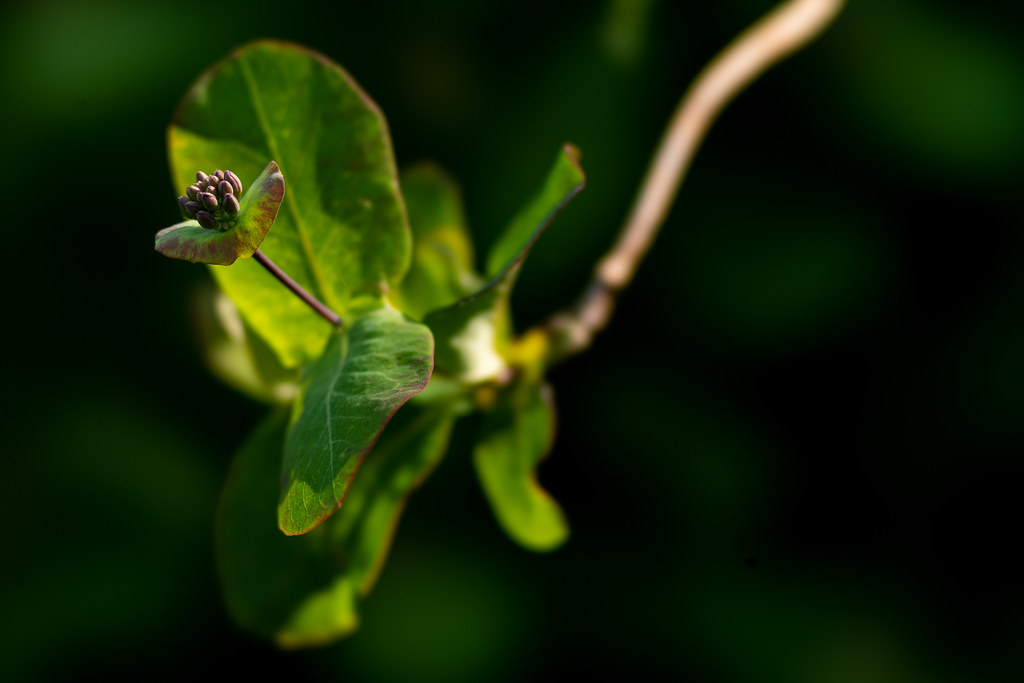
Smooth Trans Focus / Bokeh chat
Ok, before I get into the experience of shooting the Sony 135mm STF, let’s take a step backward for a moment because I’m guessing a few people reading this will have no idea what a ‘Smooth Trans Focus’ lens is. Well, in honesty, I don’t really know either – not the technical stuff anyway. I can sorta follow a bit of the info when I read about them, but it all gets a bit too technical for me. Apparently these lenses contain some sort of filter called an apodization filter. The basic gist is, this filter – along with a secondary iris – allows you to control the super-smoothness of your bokeh. There’s a great article on Kurt Munger’s site here that goes into a lot more of the technical detail with a load of comparison images too.
The good bokeh compromise
What I do know a little bit about is Bokeh, and more significantly to this article a tiny bit about some of the trades off and compromises that are made in lens designs around good bokeh vs. sharpness. What’s interesting about the Sony 135mm STF to me – and any other STF lens for that matter – is that it seems to be a lens that tries to find a new compromise, but in doing so limits its target audience even more. In fact this is exactly why I wanted to try it. I don’t think I am the target audience for this lens, but I enjoy exploring and playing with kit that isn’t just designed to be the ideal solution for everyone.
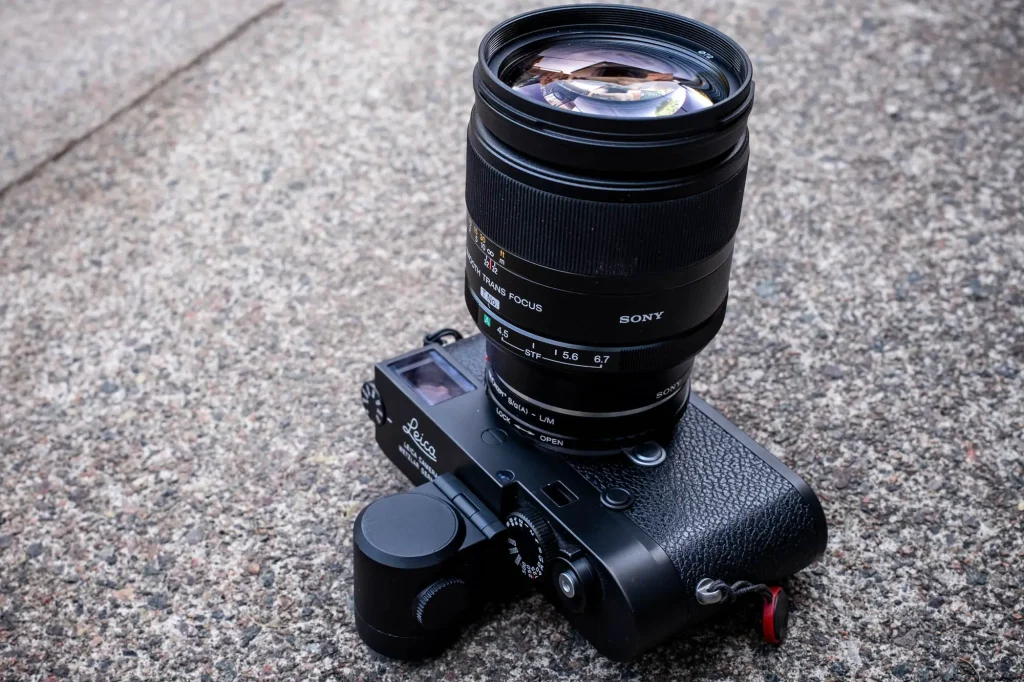
So…
Bokeh is one of those funny subjects in photography that seems to get talked about way too much. I operate with a chunk of denial about how much I take note of it. I mostly say I don’t, but actually I suppose I do (you can read my extensive waffles about the subject here). One of the reasons I like Sonnar lenses is the lovely melted un-distracting Bokeh. But, as a Sonnar fanatic, I’m quite fortunate that I also like lenses that don’t render absurdly high levels of resolution. I’m also not opposed to a little bit of a gooey glowing look to my wide open images and especially like that look in the transition to out of focus areas in my images.
These sorts of optical traits all go together quite nicely. At least as I understand it, they’re all caused by under-corrected spherical aberrations. The very nature of Sonnar lenses is indeed that they are under corrected. As a general rule, they have great bokeh, glowing transition to out of focus, and at least when talking about “proper” old Sonnar lens designs, they tend to be lower resolution.
If you want a higher resolution sharper more clinical image that doesn’t suffer from things like glow you need to find a lens that has a design that corrects for spherical aberrations. But in doing so, you risk ruining the Bokeh. Corrected spherical aberrations cause the background Bokeh to have hard edges. This is what causes the messy confusing patterns in things like out of focus foliage.

This trade off in lens design wryly amuses me. The two things that most people seem to want from their lenses these days is a very difficult to achieve combination of perfect bokeh and ultra-sharp focus. As far as I can gather many modern lens designs have become absurdly complex in a bid to give this combination to consumers. These complex designs use all sorts of weird and wonderful aspherical optics to correct for the aberrations caused by the spherical ones. Of course, this in turn causes other issue the lens aficionados moan about like onion rings in the bokeh which are apparently caused by the more complex machining that goes into these types of elements. And then you get moaners like me who just find modern lenses to render too clinically.
In short, we consumers are never happy. But, getting back to the original purpose of this post – at least it seems to me – the Smooth Trans Focus lens is a lens designed to attempt to make at least some people happy by providing high levels of sharpness and nice smooth bokeh . Albeit with its own set of different compromises.
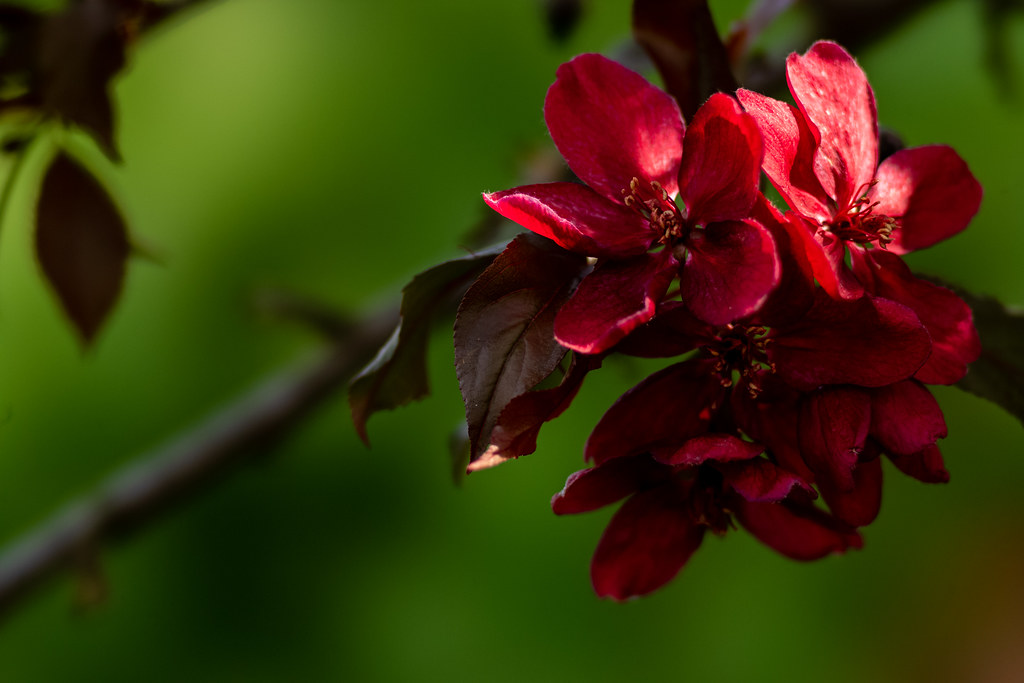
The apodization element compromise
If you go and read Kurt’s excellent review of the Sony 135mm STF, you will read about the apodization element being something similar to a ND filter, but thicker and darker-graduated toward the edges. With this element being within the lens, rather than on it creating a vignette (at it sounds like it would to me), it actually darkens the whole image. The result of this is a lens that has a wide open f/stop of f/2.8, but the light transmission of an f/4.5 lens.
This might sound counterintuitive, but actually the purpose of this filter is to control the look and feel of the bokeh. In very simple terms, it prevents out of focus highlights from having hard edges by darkening the edges of out of focus highlights. The result being super-smooth out-of-focus rendering. But, alongside the super-smooth out of focus rendering, it is also a very sharp and apparently well corrected lens. In short, it achieves two of the main goals of a lot of modern photographers… apart from, of course, that it looses the light transmission.
Who’s it for
In Kurt’s review of the Sony 135mmm STF lens, he too talks about the limited appeal of this lens, highlighting it as a lens that’s really only for those who demand perfect bokeh and who view their images large. I’d probably further qualify that by saying really it’s probably only of real use to photographers who take photos in good light where the background is likely to be distracting even when out of focus. And by the measure – as I have talked about in the context of bokeh before on this website – I could make some argument for just choosing a more suitable background to be out of focus in the background anyway.
That being said, bokehphiles will be bokehphiles, and for those who do obsess about this sort of thing, it is indeed hard to deny both the sharpness and beautiful smooginess (yeah that’s a word!!) of the bokeh.
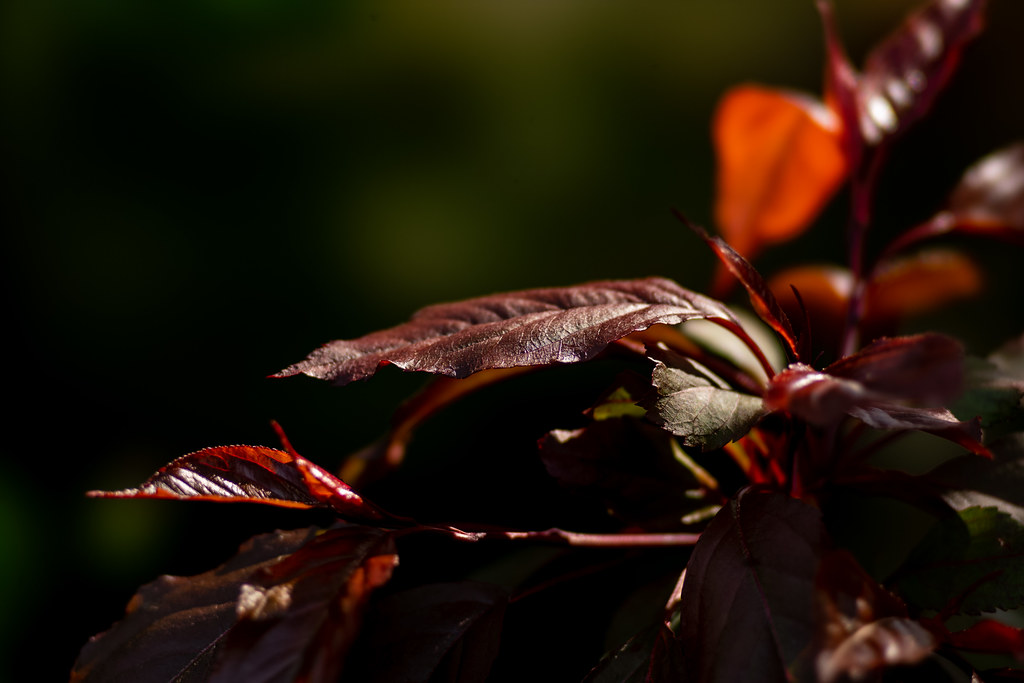
My Experience
So, on to my experience… As I said at the beginning of the post my GAS for this lens came to nothing. That’s probably no surprise reading the above either. But, I’m certainly not going to argue with the quality of the results. The images I have shared within this post were all taken in my back garden with the Leica M10-P, Visoflex viewfinder – and in the case of a couple of shots – my tripod. To be honest though, the tripod wasn’t that much use. With the leaves etc blowing in the wind, I still had to use relatively fast shutter speeds, and in the case of a few of the shots – not least because of the f/4.5 equivalent light transmission – slightly higher ISOs than I might have liked. All the shots were taken with both iris wide open though, and despite this, and the close proximity, the results do indeed have very smooth bokeh (both foreground and background) and are very sharp! Wonderful stuff, I would even go as far as saying that I enjoyed the experience of shooting the Sony 135mm STF – that doesn’t mean I could see myself repeating it. Still, it was fun while it lasted I suppose (the lens is now for sae if anyone is interested?).
The links again: Kurt Munger’s review here, Rollin’s Mini review here
Share this post:
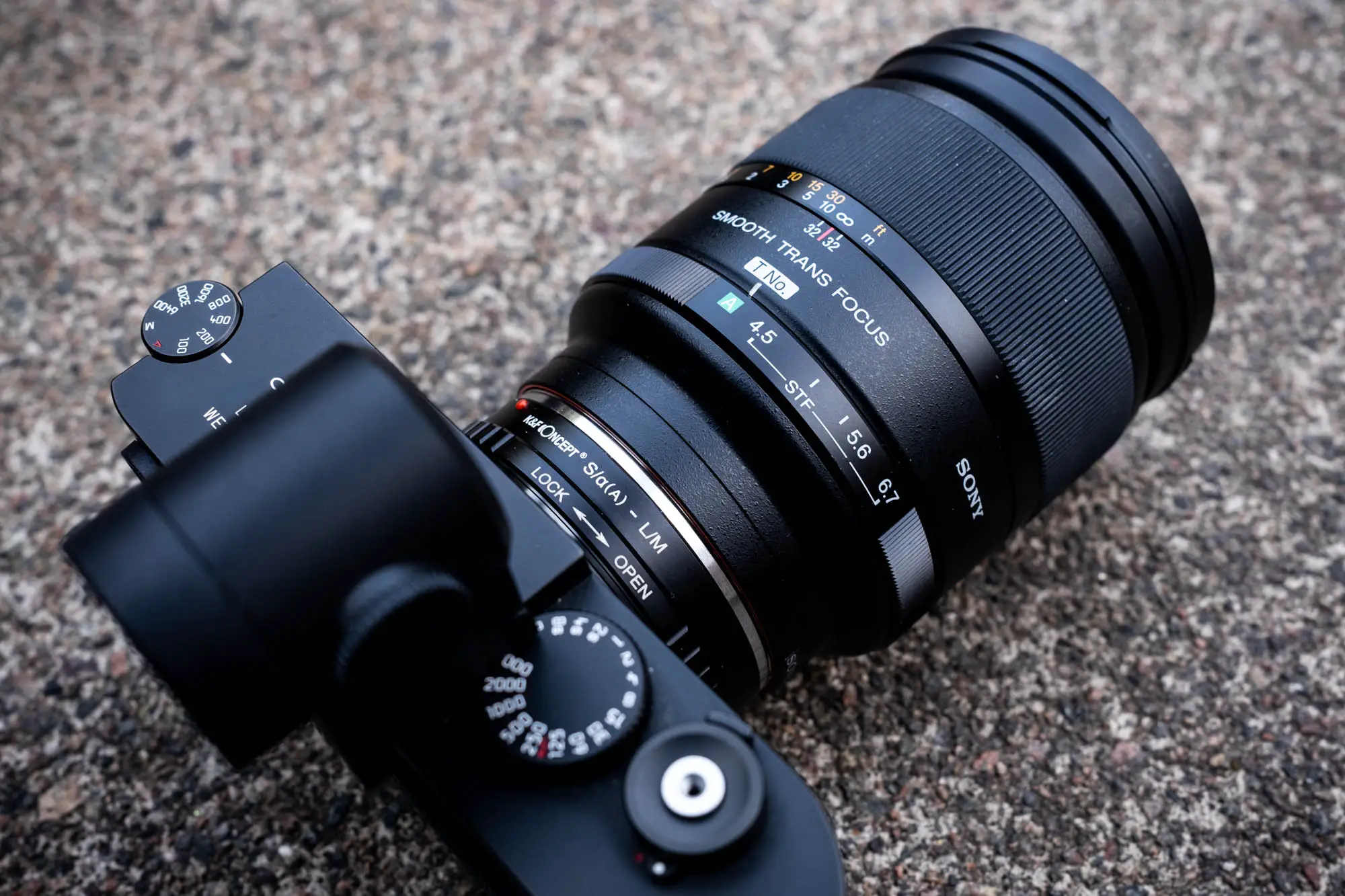








Comments
Brian Sweeney on Sony 135mm STF ‘Smooth Trans Focus’ – A Different Compromise for Sharp Focus and Smooth Bokeh
Comment posted: 25/05/2020
Sony Marketing Department: We came up with a really catchy acronym, "STF"- Smooth Trans Focus. You engineer guys do something so we can sell it. Make it really new, different- we don't care as long as it's an "STF" lens.
Engineers: Why would anyone buy this when they can just get a 1952 Nikkor-P 10.5cm F2.5 or a Nikkor-Q 13.5cm F3.5?
Marketing Guys: Because we have a cool Acronym, didn't you hear us say "S-T-F"?
Comment posted: 25/05/2020
Louis Sousa on Sony 135mm STF ‘Smooth Trans Focus’ – A Different Compromise for Sharp Focus and Smooth Bokeh
Comment posted: 25/05/2020
Comment posted: 25/05/2020
Kurt Ingham on Sony 135mm STF ‘Smooth Trans Focus’ – A Different Compromise for Sharp Focus and Smooth Bokeh
Comment posted: 25/05/2020
Comment posted: 25/05/2020